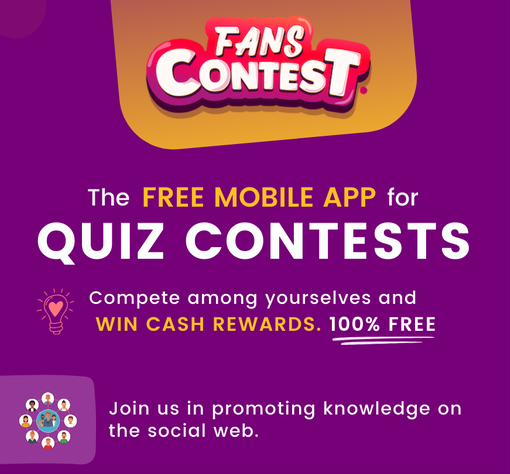May 31 marks a pivotal moment on the global health calendar—World No Tobacco Day (WNTD). The annual event, spearheaded by the World Health Organization (WHO), gathers voices from across continents in a unified front against the tobacco epidemic. This year, the 2025 campaign is making a bold statement with the theme: “Unmasking the Appeal: Exposing Industry Tactics on Tobacco and Nicotine Products.”
Health experts, policymakers, educators, and youth advocates are uniting around a singular mission—to peel back the glossy veneer of tobacco marketing and reveal the calculated manipulation behind it. Tobacco and nicotine giants have long relied on deceptive practices to keep their grip on the market, but now the spotlight is on, and the smoke and mirrors are being dismantled.
Glitzy packaging, candy-flavored vapes, influencer endorsements, and sleek social media ads aren’t innocent branding decisions—they’re precision-designed tools targeting a new generation of consumers. WHO’s 2025 campaign confronts these insidious strategies head-on, particularly those aimed at luring young people into lifelong addiction.
By highlighting how tobacco companies cloak harmful substances in appealing disguises, the campaign seeks to galvanize support for policy reform, including a global ban on flavored tobacco and nicotine products. According to public health advocates, these flavors—ranging from bubblegum to tropical fruit—are a critical hook used to attract first-time users, many of whom are teenagers.
Rather than addressing the declining numbers of adult smokers with cessation tools or harm-reduction strategies, tobacco conglomerates have instead shifted their gaze toward youth. The rationale is simple: lifelong customers start young. WHO estimates that more than 37 million young people aged 13–15 worldwide are using tobacco in some form. This figure, while staggering, barely scratches the surface of the emerging threat posed by novel products such as e-cigarettes and heated tobacco devices.
Colorful e-liquid pods and discreet vape pens have become symbols of rebellion and modernity among teenagers, helped along by viral marketing tactics that evade traditional regulatory scrutiny. WHO’s campaign urges governments to catch up, adapt, and push for stronger regulations that account for these evolving tactics.
Yet the issue goes beyond policy. At the heart of WNTD 2025 is a call to consciousness. The public is being asked to question who benefits when harmful products are rebranded as trendy lifestyle choices. Young consumers must be empowered to see through the illusion, to understand that what appears fashionable could come with a lifetime of consequences—lung disease, heart complications, and a loss of autonomy over their health.
WHO’s Director-General Dr. Tedros Adhanom Ghebreyesus emphasized that education and transparency are the most powerful tools we have. “When young people know the truth, when they understand the manipulation, they can make informed decisions. They become not just consumers, but advocates for change.”
Campaign materials this year are being rolled out globally in schools, communities, and digital platforms. Youth groups are participating in online challenges and debates, developing grassroots initiatives to educate peers about the deceptive practices employed by these corporations.
The spotlight is also turning toward the platforms that enable such marketing. Social media companies, streaming services, and even online retailers are being urged to take responsibility for how their tools are being exploited. WHO argues that accountability must extend beyond manufacturers to all stakeholders in the marketing pipeline.
This year’s theme—“Unmasking the Appeal”—serves both as an exposé and a rallying cry. It’s a challenge to tear down the layers of manipulation and lay bare the true cost of tobacco and nicotine consumption, especially for the world’s youth. It’s also a moment to stand united in demanding stronger protections and policies that prioritize public health over profit.
As May 31 unfolds, the voices ringing out aren’t just from policy chambers or health organizations—they’re coming from classrooms, social networks, and homes. Young people themselves are beginning to recognize the bait-and-switch tactics used to entangle them. The tide, it seems, is turning.
World No Tobacco Day 2025 isn’t just a commemoration; it’s a reckoning. A declaration that the era of silent manipulation is over. Tobacco’s pretty mask is slipping—and the world is finally watching.





![Nollywood Actor Yomi Fabiyi Alleges Mohbad Was Killed, Claims Possession Of Mohbad Murder Footage [VIDEO]](https://blogger.googleusercontent.com/img/b/R29vZ2xl/AVvXsEi7KtFcQiB94_n479AZ0cHJjUPbzu2i-cm5RdthZnGOrJlVJtBrN5F6cHj4QY92cyXfJjTfYBzeHjgTD9oFY9JaxI9LLcFn6bWNfyoznmfdHeG4-BjDu0ILmKjwNiyWjTbSPYdU9xGAw12l7FAaTgliuZJv72qyD25bPY6AWQCTvmQDZsQOBuvluHKPrPif/w72-h72-p-k-no-nu/fabiyi%20o123.jpg)



DSHFJCGHMJH.jpg)
![New Movie Alert! MEETING ALEX - Ik Ogbonna - No #1 Trending Nigeria Movie for May 20TH 2025 [WATCH]](https://blogger.googleusercontent.com/img/b/R29vZ2xl/AVvXsEjqOWIAaFG-HLXopPFh5Vqx0i7qEHJ-B1GzBDhvvEto3eiloVJOd65LiRWNJgTPy5r6z4tOzlH9YT23pruH5mDTj7FfPBa4JwaUxAw4K3HTImdWPuzyrsNGAA9PEtROglMeColWouUoLviS3yZwO_l231n2IkZzNg5wotlic738IYgL3L69PNDrsg0ES60Q/w72-h72-p-k-no-nu/meeting-alex.jpg)









0 Comments
Hey there! We love hearing from you. Feel free to share your thoughts, ask questions, or add to the conversation. Just keep it respectful, relevant, and free from spam. Let’s keep this space welcoming for everyone. Thanks for being part of the discussion! 😊